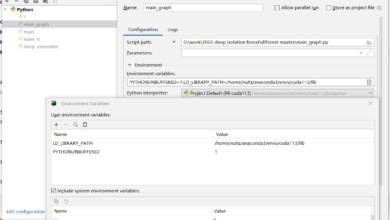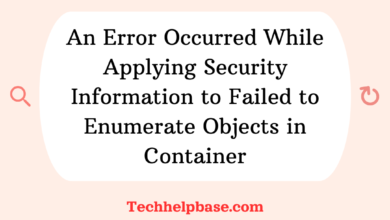Modulenotfounderror: no module named ‘pydantic_core._pydantic_core’

The error message [modulenotfounderror: no module named 'pydantic_core._pydantic_core'] is a common issue encountered by Python developers who are working with the Pydantic library, a popular tool for data validation and settings management using Python data classes. This error typically occurs when users try to import Pydantic but encounter problems related to a missing or incorrectly installed component—specifically, the pydantic_core._pydantic_core module.
Nature of the Problem
The ModuleNotFoundError is a Python error that indicates the program is trying to access a module that doesn’t exist or hasn’t been properly installed. In this case, the error is tied to the Pydantic core functionality. The Pydantic core library contains the essential tools needed for fast validation, and when it’s missing or corrupted, it prevents Pydantic from working correctly.
This issue usually manifests when:
- Developers update their Pydantic version without updating the dependencies.
- The installation of Pydantic is incomplete or corrupted.
- Compatibility issues arise with different Python environments or virtual environments.
Causes of the Error
Several causes can lead to the error [modulenotfounderror: no module named 'pydantic_core._pydantic_core']:
- Inconsistent Environment: Sometimes, users switch between different Python environments or use virtual environments where the Pydantic core module isn’t installed or accessible.
- Version Mismatch: Updating the Pydantic package without updating the necessary dependencies, such as
pydantic-core, can lead to this issue. - Incomplete Installation: If the installation process for Pydantic is interrupted or incorrectly executed, it may not include all necessary modules.
- Corrupted Files: In some cases, files related to
pydantic-coremight become corrupted during installation or use, causing Python to fail when attempting to import the module.
Real-World Examples of the Problem
Many users have encountered the error in a variety of scenarios. For example, a developer on a forum mentioned that after updating their project dependencies using pip, they encountered the error when running their project. Despite having installed Pydantic, the pydantic_core._pydantic_core module was not found. Another common situation is when users set up a new project or transfer it to another machine, leading to missing modules if not all dependencies are properly set up in the environment.
In both cases, the core issue was traced back to either incomplete installations or environment mismanagement.
Step-by-Step Guide to Resolve the Error
If you’re facing the error [modulenotfounderror: no module named 'pydantic_core._pydantic_core'], here are several methods to troubleshoot and fix the issue:
1. Check Your Python Environment
Before diving into complex fixes, ensure that you’re working in the correct Python environment. If you’re using virtual environments, activate the appropriate one by running:
source venv/bin/activate
or, on Windows:
venv\Scripts\activate
After activating the environment, check if the required Pydantic modules are installed:
pip list | grep pydantic
If Pydantic and pydantic-core are not listed, proceed to install them.
2. Install or Reinstall Pydantic
In many cases, the error occurs because the Pydantic core module is missing. To ensure that both Pydantic and pydantic-core are installed correctly, use the following command to install or reinstall Pydantic:
pip install --upgrade pydantic
This command upgrades Pydantic to the latest version and ensures that all necessary dependencies, including the core module, are properly installed.
3. Manually Install pydantic-core
If reinstalling Pydantic doesn’t resolve the issue, you can attempt to manually install the pydantic-core module:
pip install pydantic-core
This command directly installs the core dependency, which should solve the error if the problem was caused by a missing or corrupted core module.
4. Check for Version Compatibility
Ensure that the version of Pydantic you’re using is compatible with your Python version and other dependencies in your project. You can specify an older or compatible version of Pydantic by running:
pip install pydantic==1.10.2
This helps if you’re working with other libraries that might not be compatible with the latest version of Pydantic.
5. Clear Cache and Reinstall
Sometimes, clearing the Python package cache and reinstalling Pydantic can resolve corrupted or incomplete installations. Run the following commands:
pip cache purge
pip uninstall pydantic
pip install pydantic
This method ensures that any corrupted files or installations are removed before reinstalling the package.
6. Verify PYTHONPATH and Dependencies
Finally, check that the PYTHONPATH environment variable includes the path to your installed modules. If the path is incorrect, Python won’t be able to find the modules even if they are installed. Adjust your PYTHONPATH as necessary, and ensure that any virtual environments are properly activated.
Preventing Future Issues
To avoid encountering similar issues in the future, follow these best practices:
1. Use Virtual Environments
Always use a virtual environment when working on Python projects. Virtual environments keep dependencies isolated for each project, reducing the likelihood of encountering version conflicts. Create a virtual environment using:
python -m venv myenv
Activate the environment and install dependencies, including Pydantic.
2. Regularly Update Dependencies
Regularly updating dependencies ensures compatibility and reduces the risk of encountering missing or deprecated modules. To update your project’s dependencies, use:
pip install --upgrade pydantic
It’s also helpful to review your requirements.txt file to ensure all dependencies are correctly listed.
3. Use Dependency Managers
Tools like Poetry or Pipenv provide better dependency management than standard pip, ensuring that all necessary modules and submodules are installed and maintained properly. These tools also make it easier to maintain different versions of dependencies across multiple projects.
4. Check Installation Logs
When installing packages, always review the logs for any errors or warnings. This can give you a heads-up if something didn’t install correctly, preventing errors like [modulenotfounderror: no module named 'pydantic_core._pydantic_core'] before they occur.
5. Stay Informed About Updates
Keep an eye on updates and changes to libraries like Pydantic by following their official repositories and reading release notes. This helps you stay ahead of breaking changes or newly added dependencies.




